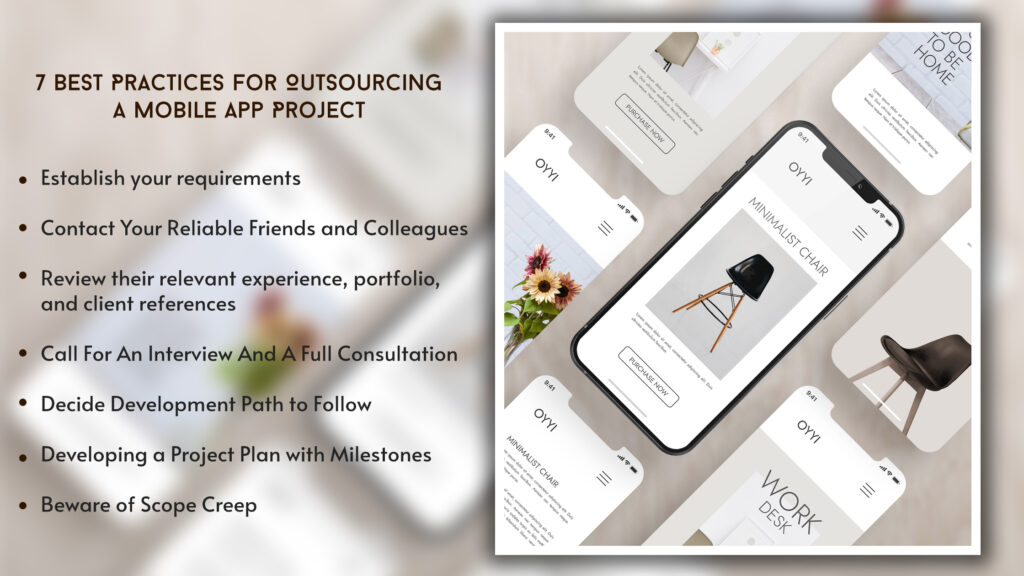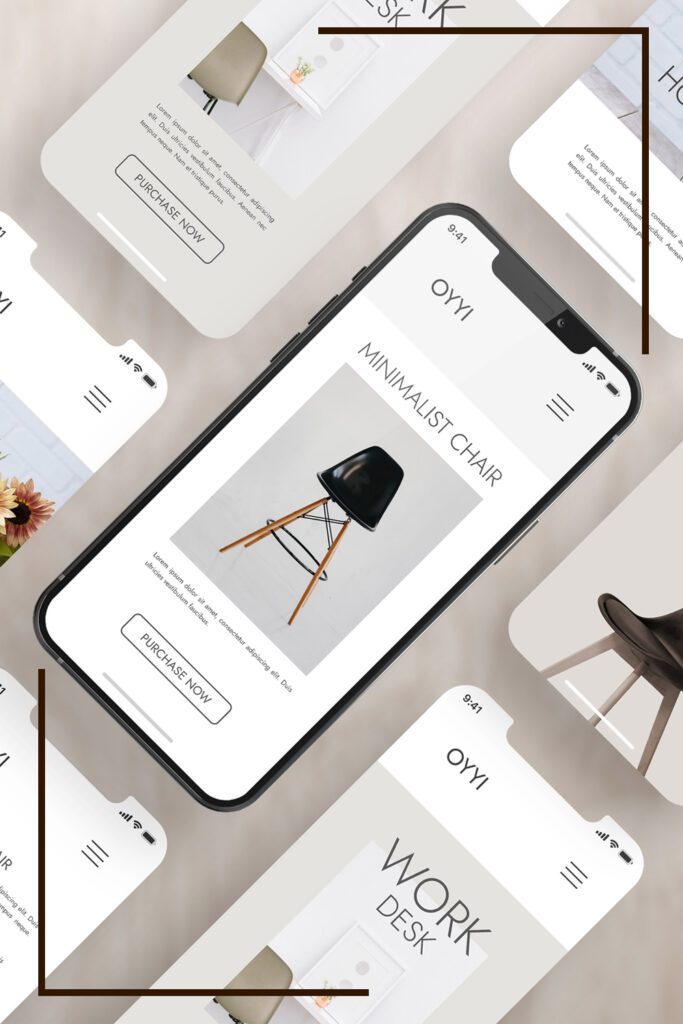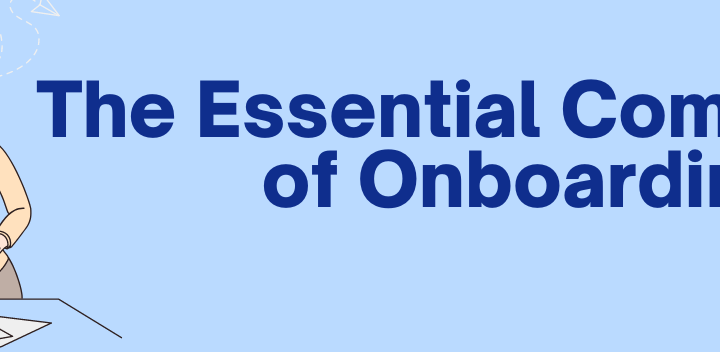Creating a mobile application is not for sensitive people.
Many others fall into the trap for every successful outsourcing a mobile application on the market. a top React Native development company, we have curated hundreds of mobile applications for our clients. However, we have a strong opinion about best practices for outstanding outcomes.
Table of Contents
Outsourcing or Building In-House?
If you have a qualified design and development team in-house with surplus capacity, utilize them. There is a joint risk in contracting a team of unknowns for any project, from home repair to mobile app development.
If you do not have a ready-made team for the project, unless you are trying to do a lot of hiring, it is usually risk-free, more budget-friendly, and quicker to outsource the work.
Now, if you don’t have a team and you need to outsource,
The first question that comes to mind is whether I should take the risk.
Or
How can I reduce the risk?
We have proposed a solution to this problem.
Below are the Best 7 Practices for Outsourcing a Mobile App Project.
1. Establish Your Requirements
Create a detailed requirement document highlighting the workings of the application you imagine. The document should also include background information that doesn’t map directly to functionality that replies to questions like
- What inspired you to create this app idea?
- What are the benefits of this solution?
- What makes users want to use this app?
- What does success look like in an app?
- Do you anticipate any challenges or risks?
This document should provide all the data needed by the vendor so that he can provide you with an optimized app development solution. The document you curate should not be compulsorily professional, but crystal-clear. Your document should have all of the following things:
- A Thousand Words: While a picture paints a thousand words, a detailed narrative helps vendors understand your motivations and goals.
- Pictures: Anything from a drawing on a cocktail napkin to a professionally designed design can be used in this document. A picture’s purpose is to illustrate the narrative and reveal all the features you would expect.
- Numbers: Explain the thinking behind the numbers and a timeframe for the work. For example, if the app will launch at a trade show in three months, this is an essential line in the sand that vendors must respect.
Incorporate this document as an appendix to your contract because it is the basis for everything—the milestones, the workflow, the overall functionality, and the cost/time estimates.

2. Contact Your Reliable Friends and Colleagues
When I wish to buy a trendy and expensive mobile like the iPhone 13 Pro, I might start by reading the reviews. Having a reliable friend who has an iPhone store, likes it, and is willing to show it this option is better than any other option. The same is true for searching for and hiring a development team.
You can find the best information about a vendor from friends or colleagues you respect who have used it. In addition to demonstrating their finished product, they can also discuss their experience.
- Did you enjoy working with this team?
- Was this team able to deliver what they promised?
- Along the way, how did this team handle the bumps?
- Was this team able to deliver a technically sound solution?
Moreover, it is not possible to find someone who you can trust and who can provide a vendor suggestion. Many times, business employees are aware of the vendor by its reputation but do not have experience with them.
3. Review their Relevant Experience, Portfolio, and Client References
On Amazon, we value high ratings and many reviews when we research products. We tend to be suspicious of products with high ratings and few reviews.
Verify an outsourced company’s credentials, including years of experience, mobile portfolio, and client references on B2B review websites such as Clutch, SoftwareWorld, and GoodFirms. Find companies that have developed applications with similar technology to yours.
For example, when an app interacts with an external device using Bluetooth or WiFi, seeing how that technology has been applied by a vendor in the past provides a technical benchmark.
When you find some promising companies, you should scrutinize their websites. Ideally, a company’s website should reflect your design sensibility, but remember that sometimes the cobbler’s children have no shoes. Take a look at the company’s blog posts to determine:
- Is the company actively producing new content? Like an open-source software project, a company’s website should reflect its dynamic, ever-changing nature. There is nothing better to illustrate this than a steady stream of new material on the website.
- Is the writing reflective of thought leadership? In technology companies, the writing should be aspirational, exploring uncharted territory rather than recounting lessons learned from completed projects.
- Does this company offer learning opportunities? You can gauge a company’s commitment to intellectual growth by examining their writing. Did they reflect and learn lessons that led to a change of direction?
4. Call For An Interview And A Full Consultation
Schedule interviews with your top applicants. An in-brief consultation will help you to clarify most of your questions, and you will be able to verify the details shown on the company website.
An experienced company will answer all your questions and provide the best technical solution for your app development needs. Consultation is mandatory to get to know the development process. Some of the basic questions to ask:
- How long have you been developing apps?
- How big is your team, and where is it located?
- What is your core competency?
- Are you able to provide end-to-end services such as design and development of both front-end and back-end?
- Can you help us submit and approve the app to the app stores?
- Would you be able to provide us with some examples of your work and references from clients?
If you do not have in-house technical expertise, bring along someone who has a solid understanding of outsourcing a mobile app development. Although the vendor should avoid getting into the technical weeds in the first meeting, someone from your side should be present to verify the vendor’s competence.
When the company provides satisfactory answers, the challenge is assessing how it is to work with them. These are some clues to absorb during the conversation:
- Were you able to have a good exchange of ideas? In other words, did the team listen at least as much as it talked?
- Were there any disagreements during the discussion? It is ideal for a vendor to have thoughts that differ from yours and to have the courage to voice them professionally and tactfully.
5. Decide Development Path to Follow
Before getting totally involved in the project, the vendor will have to find a development approach before solidifying a project plan.
Yes, the vendor has the technical expertise, but you must understand the issues. If the technical details are outside of the subject, then bring a technologist.
It will be an advantage for your vendor if your side has a mindset and can collaborate to decide the best approach. These are some of the basic questions that you should know about before the meeting:
- Would we like our first release to be for the iPhone or Android?
- Is it necessary for our app to make extensive use of the native hardware of the phone?
- How does a hybrid app differ from a native app?
- Which technology should we use if a hybrid approach is chosen?
- Can our app be developed using HTML5?
6. Developing a Mobile App Project Plan with Milestones
When the selection of vendors is done, ask them to create a project plan outsourcing a mobile app. A project plan might include the following: difficulties and success, a cost estimation, and a timeline for project completion. These iterations represent a milestone-driven plan with deliverables at the end of each.
- The first iteration will be a week of consultation and assessment. Provide all the requirements you have. The app development company can refine, clarify, and improve the requirements.
After the two parties have agreed upon the final requirements, the vendor will present you with a project plan and a breakdown of milestones. - The second iteration will bring the app’s wireframe and visual designs to life in two to three weeks. It is an interactive process, and customer involvement improves the final product. At the end of this phase, the app’s UI and UX will be finalized.
- In the third iteration, the time has arrived when your app development begins. The vendor will build the front-end and back-end of the app and implement the features and functions.They will provide a build at the end of each milestone that demonstrates the new functionality.
Feedback can be provided and milestones approved or declined before moving on to the next milestone. Depending on the difficulty level, each milestone may last one to three weeks.
7. Beware of Scope Creep

It is simple to write about creating a final document that serves as an official statement of work. However, we are not humans with superpowers; we forget things, alter our minds, and get habitual of changing according to the conditions.
The development of waterfall methodology has gone out of style because it makes no sense to wait for a long time to design everything from scratch instead of getting started on what’s already known.
Any vendor bidding on a contract with a fixed price already risks the additional cost of unexpected challenges and problems. When vendors smell scope creep, their spider senses start to tingle.
The additional mobile app project scope will be treated as a change requiring estimation and additional costs.
Because change is inevitable, this section is titled “Beware of Scope Creep,” not “Avoid Scope Creep.” It’s equally likely that features that once seemed essential will lose their luster and become non-essential.
It may be possible to use horse-trading features without incurring additional cost, but it depends on the flexibility and creativity of the vendor you select.
Conclusion
Customer and vendor dedication are required for these best practices for outsourcing a mobile app. Customer consensus and agreement on the feature set are the customer’s responsibilities. It is also vital that the customer be involved in every phase of the project.
The vendor must always look out for the customer’s best interests. If these best practices are respected, quality digital products can be produced within the budget. A successful mobile app project also provides you with a trusted partner for future endeavors.


 Like
Like LOVE
LOVE Win
Win Cute
Cute LOL
LOL OMG
OMG WTF
WTF Fail
Fail


